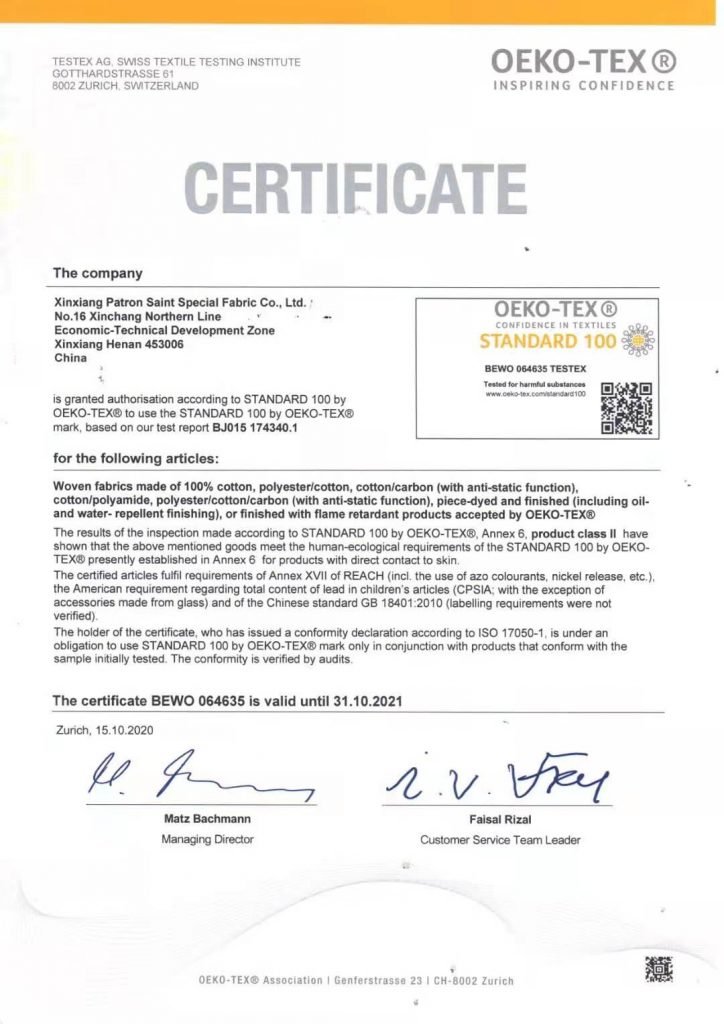Oeko-Tex is an organization that verifies the human-ecological safety of textile and leather products in all stages of production. Textile products along with intermediate materials at all levels of production can be subject to this independent certification system. Even products that come into indirect skin contact like coats, jackets, buttons, zippers, etc can also be certified by Oeko-Tex. The more fabric comes to human contact, the stricter the human-ecological requirements.
Being introduced in 1992, The Standard 100 by Oeko-Tex is a label for textile products affirming that they have undergone laboratory testing for a wide array of harmful particles. Textiles can only be certified by Oeko-Tex if all the used elements maintain the required criteria.
The objective of Oeko-Tex is to construct a standardized quality assurance system for retailers and manufacturers all over the world; compensating for regionally dissimilar standards of evaluation. Countrywise different standards of evaluation make it hard to ascertain quality control and the consumers are more likely to come into contact with deleterious chemical components.
The intended use of a textile article varies the requirements of Oeko-Tex testing for harmful substances. Raw and dyed finished yarns, finished fabrics and knits, all sorts of clothing, bed linen, home, and household textiles, textile toys, terry cloth items, etc. are some examples of items eligible for certification.
Oeko-Tex classifies all the eligible textile products into four categories:
All products that fall in these categories are tested for their attributes of several hundred individual substances from 17 groups of chemicals. The standard also takes into account numerous substances known to be harmful but not yet subject to any regulation. Product class, I go through an additional test for saliva resistance.

